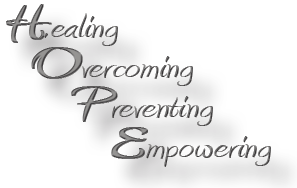


|
Adjustment Disorder
Adjustment disorder is a short-term condition that occurs when a person is unable to cope with, or adjust to, a particular source of stress, such as a major life change, loss or event. Because people with adjustment disorders often have symptoms of depression, such as tearfulness, feelings of hopelessness and loss of interest in work or activities, adjustment disorder is sometimes called "situational depression." Unlike major depression, however, an adjustment disorder is triggered by an outside stress and generally goes away once the person has adapted to the situation.
How Common Is Adjustment Disorder? Adjustment disorder is very common and can affect anyone, regardless of gender, age, race or lifestyle. Although an adjustment disorder can occur at any age, it is more common at times in life when major transitions occur, such as adolescence, mid-life and late-life.
The type of stress that can trigger adjustment disorder varies depending on the person, but can include:
A person with adjustment disorder develops emotional and/or behavioral symptoms as a reaction to a stressful event. These symptoms generally begin within three months of the event and rarely last for longer than six months after the event or situation. In an adjustment disorder, the reaction to the stressor is greater than what is typical or expected for the situation or event. In addition, the symptoms may cause problems with a person's ability to function; for example, the person may be unable to sleep, work or study. It could be a positive event, like a wedding or purchasing a new home, or a negative event, like a family member's death, the breakup of an important relationship, or loss of a job.
Adjustment disorder is not the same as post-traumatic stress disorder (PTSD). PTSD generally occurs as a reaction to a life-threatening event and tends to last longer. Adjustment disorder, on the other hand, is short-term, rarely lasting longer than six months.
These symptoms or behaviors are clinically significant as evidenced by either of the following:
The stress-related disturbance does not meet the criteria for another specific mental disorder. Once the stressor (or its consequences) has ended, the symptoms do not persist for more than an additional 6 months. By definition, if your feelings related to the event last longer than 6 months, it will no longer qualify for an adjustment disorder diagnosis.
An adjustment disorder can occur at any time during a person's life and there is no difference in the frequency of this disorder between males and females. An adjustment disorder is diagnosed by a mental health professional through a simple clinical interview.
Adjustment disorders are often diagnosed when it's not clear the person meets the criteria for a more severe disorder, or the actual diagnosis is uncertain. This diagnosis often gives the clinician time to further evaluate the client during additional therapy sessions.
An adjustment disorder can have a wide variety of symptoms, which may include:
Adjustment disorders are further categorized by the specific symptoms experienced:
Symptoms in children and teens tend to be more behavioral in nature, such as skipping school, fighting or acting out. Adults, on the other hand, tend to experience more emotional symptoms, such as sadness and anxiety. |
||||
|
|
